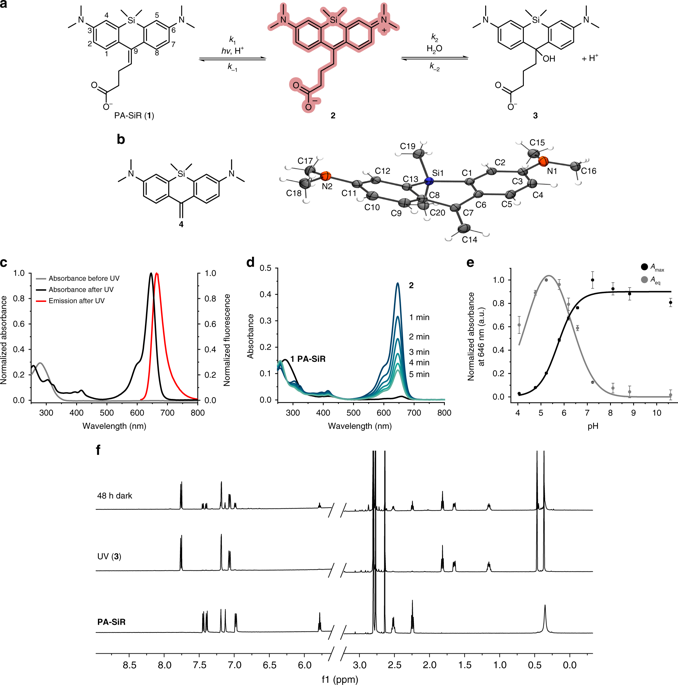当前位置:
X-MOL 学术
›
Nat. Commun.
›
论文详情
Our official English website, www.x-mol.net, welcomes your
feedback! (Note: you will need to create a separate account there.)
Photoactivation of silicon rhodamines via a light-induced protonation.
Nature Communications ( IF 14.7 ) Pub Date : 2019-10-08 , DOI: 10.1038/s41467-019-12480-3 Michelle S Frei 1, 2 , Philipp Hoess 3, 4 , Marko Lampe 5 , Bianca Nijmeijer 3 , Moritz Kueblbeck 3 , Jan Ellenberg 3 , Hubert Wadepohl 6 , Jonas Ries 3 , Stefan Pitsch 7 , Luc Reymond 8, 9 , Kai Johnsson 1, 2, 9
Nature Communications ( IF 14.7 ) Pub Date : 2019-10-08 , DOI: 10.1038/s41467-019-12480-3 Michelle S Frei 1, 2 , Philipp Hoess 3, 4 , Marko Lampe 5 , Bianca Nijmeijer 3 , Moritz Kueblbeck 3 , Jan Ellenberg 3 , Hubert Wadepohl 6 , Jonas Ries 3 , Stefan Pitsch 7 , Luc Reymond 8, 9 , Kai Johnsson 1, 2, 9
Affiliation

|
Photoactivatable fluorophores are important for single-particle tracking and super-resolution microscopy. Here we present a photoactivatable fluorophore that forms a bright silicon rhodamine derivative through a light-dependent protonation. In contrast to other photoactivatable fluorophores, no caging groups are required, nor are there any undesired side-products released. Using this photoactivatable fluorophore, we create probes for HaloTag and actin for live-cell single-molecule localization microscopy and single-particle tracking experiments. The unusual mechanism of photoactivation and the fluorophore's outstanding spectroscopic properties make it a powerful tool for live-cell super-resolution microscopy.
中文翻译:

经由光诱导的质子化对若丹明硅的光活化。
可光活化的荧光团对于单粒子跟踪和超分辨率显微镜很重要。在这里,我们介绍了一种可光活化的荧光团,它通过依赖光的质子化形成明亮的罗丹明硅衍生物。与其他可光活化的荧光团相反,不需要笼统基团,也不会释放任何不希望的副产物。使用这种可光活化的荧光团,我们为活细胞单分子定位显微镜和单粒子跟踪实验创建HaloTag和肌动蛋白的探针。光激活的异常机制和荧光团的出色光谱特性使其成为活细胞超分辨率显微镜的强大工具。
更新日期:2019-10-08
中文翻译:

经由光诱导的质子化对若丹明硅的光活化。
可光活化的荧光团对于单粒子跟踪和超分辨率显微镜很重要。在这里,我们介绍了一种可光活化的荧光团,它通过依赖光的质子化形成明亮的罗丹明硅衍生物。与其他可光活化的荧光团相反,不需要笼统基团,也不会释放任何不希望的副产物。使用这种可光活化的荧光团,我们为活细胞单分子定位显微镜和单粒子跟踪实验创建HaloTag和肌动蛋白的探针。光激活的异常机制和荧光团的出色光谱特性使其成为活细胞超分辨率显微镜的强大工具。















































 京公网安备 11010802027423号
京公网安备 11010802027423号